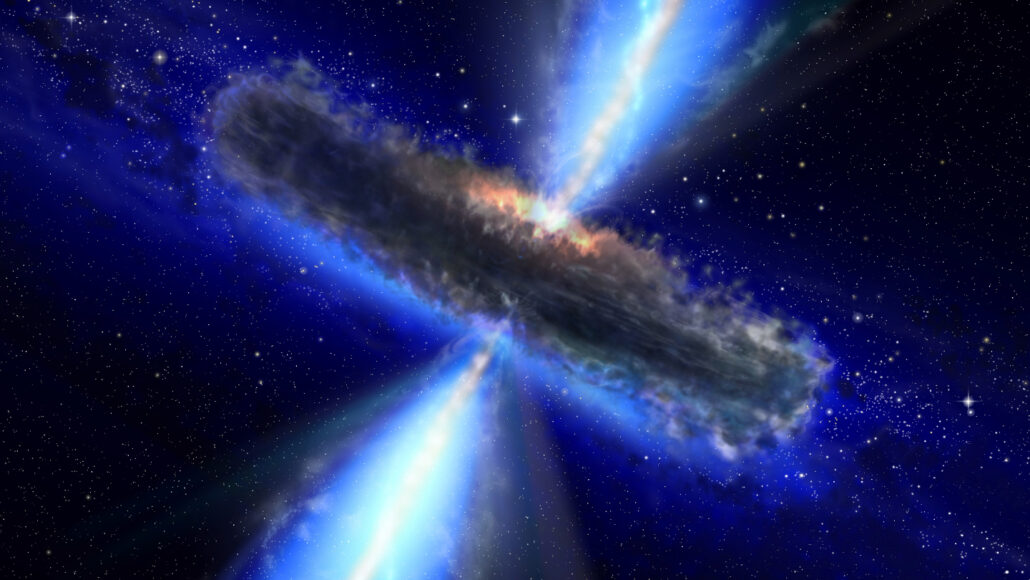James Webb Space Telescope Feed Post
Science News | Active supermassive black holes may be rarer than previously thought
Perhaps our own galaxy’s black hole grew slower than suspected Fewer supermassive black holes may undergo growth spurts than astronomers had suspected. Every known large galaxy hosts a gargantuan black hole at its center. Some of those behemoths experience bursts of beefing up, during which time they blaze brightly. But recent observations from the James Webb Space Telescope turned up far fewer of these active black holes than expected, researchers report in a paper submitted August 22 at arXiv.org. If confirmed, the finding raises questions about how some supermassive black holes got to be so big and what, if any, impact they have on the galaxies they inhabit. Huge black holes, such as the one at the center of the Milky Way, tend to be pretty quiet (SN: 6/28/23). But occasionally, a surge of interstellar detritus rains down upon them — often following a collision with another galaxy — creating what’s called an active galactic nucleus, or AGN. Here, the heart of the host galaxy emits copious amounts of light at all wavelengths as the influx of material swirling around the black hole heats up. An AGN can not only outshine their host galaxies, but they are also the brightest persistent sources of light in the universe. In 2017, astronomer Allison Kirkpatrick of the University of Kansas in Lawrence and colleagues predicted that JWST’s infrared eyes would find lots of these active black holes based on observations from other, less sensitive, space-based infrared telescopes. In the new study, Kirkpatrick and her team turned JWST toward a well-studied strip of sky where, in 2008, the Spitzer Space Telescope had found infrared signatures of active galactic nuclei in nearly a third of the 19 galaxies it studied. Those galaxies, seen as they were around the peak of cosmic star formation roughly 10 billion years ago, were all relatively bright and massive. JWST is much more sensitive than Spitzer, so it’s capable of spotting fainter, more average-sized galaxies at the same epoch — ones more comparable in size to the Milky Way. And yet, out of the nearly 500 galaxies that JWST spotted, all observed for the first time, just 6 percent appear to contain active galactic nuclei, the team reports. Read more at Science News (click below).
